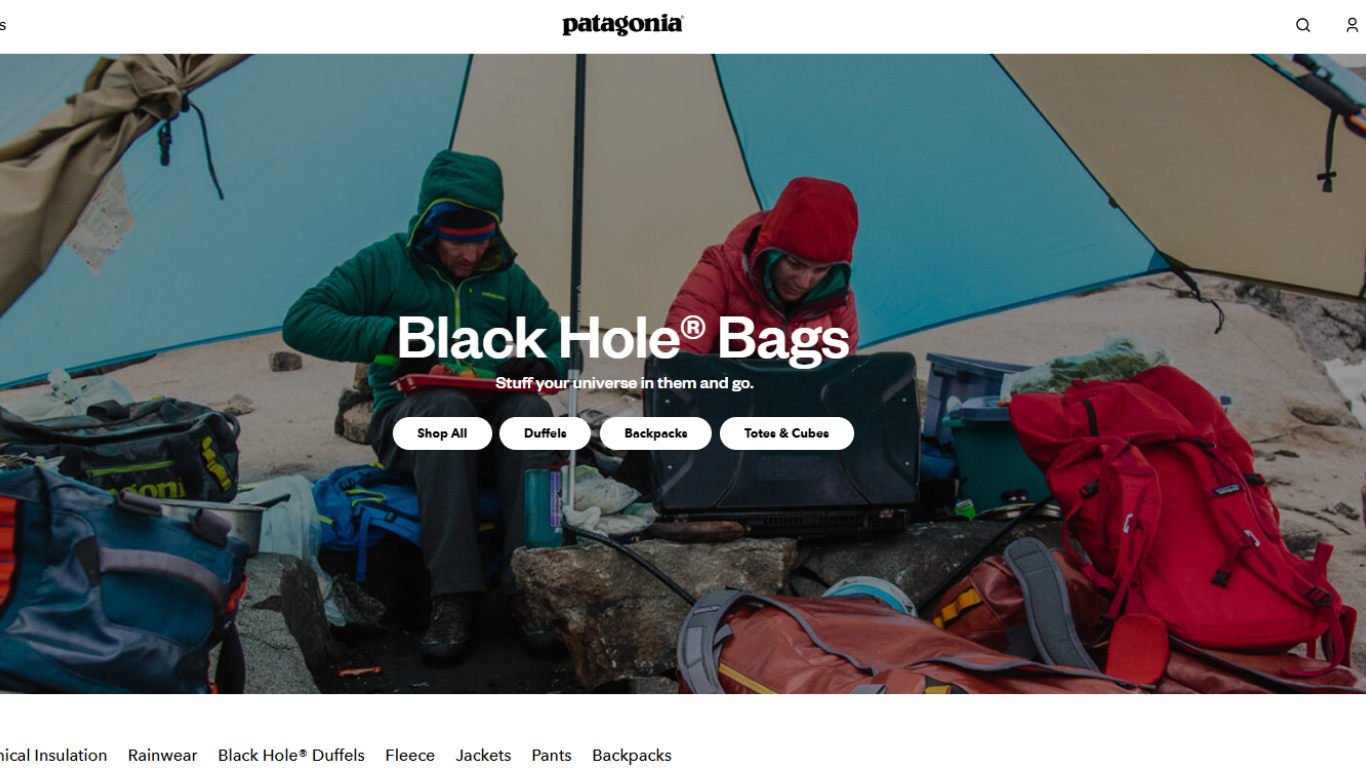Best social commerce tools are transforming the way people shop by enabling them to purchase products directly on social media platforms.
This approach not only simplifies the shopping experience for users but also provides a competitive edge for small eCommerce businesses looking to thrive in a crowded market
Here are some key things to know about social commerce:
- What it is: Social commerce is when people buy and sell products through social media channels, without having to go to a separate website.
- Why it matters: It gives small businesses a chance to reach a large audience directly, making it easier to connect with online shoppers and close sales.
- Future growth: It’s estimated that US retail social commerce sales will exceed $100 billion by 2025, showing the huge potential for generating income.
Using social commerce effectively can greatly improve the success of small e-commerce businesses.
What is Social Commerce?
Social commerce is the combination of e-commerce and social media, creating a seamless online shopping experience for users. This integration allows consumers to discover and purchase products without leaving their favorite social media content platforms.
Here are the key aspects:
1. Direct Shopping
Users can buy products directly from social media posts, stories, or ads. Ecommerce brands use this feature to make transactions easier, reducing obstacles in the buying process.
2. Enhanced User Experience
A smooth shopping journey improves satisfaction. Features like product tagging and shoppable content make it easy for users to engage with brands while browsing.
3. Increased User Engagement
Direct purchases increase interaction between consumers and brands. Engaging content that encourages sharing enhances visibility and strengthens community ties.
These elements highlight the importance of best social commerce tools, especially for small e-commerce businesses aiming to capture attention and drive sales in an increasingly competitive market.
Best Social Commerce Platforms for Small E-commerce Businesses
1. Facebook Shops
Facebook is one of the top social media platforms for social commerce, offering essential tools for small e-commerce businesses to succeed. With more than 2.8 billion active users each month, the potential audience is enormous.
Key Features:
- Inventory Sync: Facebook Shops allows businesses to synchronize their inventory seamlessly. This feature ensures that product availability is updated in real-time, minimizing the risk of overselling.
- Mobile App Features: The mobile-friendly design caters to user preferences, making it easier for customers to browse and purchase products directly from their smartphones.
- Customizable Storefronts: Retailers can create storefronts that reflect their brand identity, enhancing customer trust and engagement.
- Integrated Marketing Tools: Businesses can leverage Facebook’s advertising capabilities to promote their shops effectively, reaching targeted demographics.
- Facebook Business Profile Integration: Facebook Shops integrates with the Facebook Business Profile, creating a central hub where businesses can share updates, build brand awareness, and connect with customers. Setting up a Business Profile allows e-commerce businesses to showcase products, present a professional image, and provide easy access to contact information.

By utilizing these features, small businesses can foster stronger relationships with customers while facilitating a frictionless shopping experience. The combination of extensive reach and powerful tools like Facebook marketplace makes Facebook Shops one of the top social commerce platforms for small ecommerce business.
2. Instagram Shopping
Instagram has become a powerful platform for social commerce, especially because it focuses on visual content and influencer marketing. The way the social media platform is designed naturally encourages users to discover products through eye-catching images and videos.

This makes it a perfect space for small online businesses to showcase what they offer.
Key Features of Instagram Shopping:
- Shoppable Posts: Businesses can tag products directly in their posts, allowing users to click and purchase seamlessly.
- Product Tags: These tags provide essential product information, driving user engagement and conversions.
Using these features effectively can greatly increase brand visibility.
3. TikTok Shop
The rise of TikTok as a significant player in social commerce has transformed the way small e-commerce businesses engage with consumers.
Key elements contributing to its popularity include:
- Influencer Marketing: Leveraging influencers to reach younger audiences effectively increases brand visibility and drives sales.
- Shoppable Videos: Users can purchase products directly from engaging video content, creating a seamless shopping experience.

Social media platforms like TikTok stands out for its dynamic marketing content and its user generated content.
4. Pinterest Shopping
Pinterest Shopping stands out in the world of social commerce with its unique Verified Merchant Program and visual search engine.
This program enhances shopping experiences by:
- Providing access to exclusive features that promote visibility.
- Allowing businesses to showcase their products more prominently within user feeds.

Joining this program offers significant advantages, including:
- Increased exposure to potential customers.
- Enhanced credibility through verification, which builds trust among users.
Pinterest Shopping remains a vital social commerce platform for small e-commerce businesses aiming to capture attention and drive sales through visually engaging content.
5. Snapchat AR Shopping
Snapchat is changing the way we shop with its innovative augmented reality features. This platform lets users try on products virtually, making the experience more engaging and interactive.
Here are the key elements:
- Virtual Try-Ons: Users can see how products look in real-time, significantly improving the purchasing decision process.
- Snap Ads Integration: Brands can use AR ads that turn into immersive shopping experiences.

The main audience on Snapchat is younger, mainly Gen Z and millennials.
This group values unique and engaging content that feels genuine. Snapchat augmented reality shopping offers another exciting way to grab attention and boost sales.
Each social commerce platform has its own features that appeal to different consumer preferences, increasing overall brand visibility in the world of social commerce.
6. YouTube Shoppable Livestreams
YouTube’s shoppable livestreams provide an innovative way for small e-commerce businesses to convert views into sales. By integrating product links directly into live broadcasts, viewers can purchase items in real-time without leaving the platform.
This seamless experience enhances user engagement and encourages impulse buying.

Effective video marketing strategies include:
- Creating compelling content: Focus on storytelling that highlights product features, benefits, and usage.
- Utilizing influencers: Collaborate with content creators who resonate with your target audience to expand reach.
- Engaging with viewers: Foster interaction through live Q&A sessions, polls, and comments during streams.
Integrating YouTube shoppable livestreams into your strategy can significantly boost conversions alongside other social commerce platforms. Each has unique shopping features that cater to different aspects of social commerce, which we will explore in detail next.
Discover valuable insights on YouTube in our latest blog post – read it here.
7. LinkedIn Product Pages for Social Commerce
LinkedIn, traditionally known for its professional networking features, is now embracing social commerce with the introduction of Product Pages. This shopping feature is designed to help businesses showcase their products and drive conversions within a platform that’s used by over 900 million professionals globally.
LinkedIn Product Pages allow companies to integrate their products seamlessly into their business profiles, creating a dedicated space for potential customers to explore and learn about their offerings.

Here are some key features of LinkedIn Product Pages:
Product Showcase: Businesses can create a dedicated section on their company profile where products are highlighted. This helps to organize offerings in an easily accessible manner for potential customers who are browsing through the company’s LinkedIn profile.
Customer Reviews: LinkedIn’s Product Pages allow businesses to gather and display customer reviews directly on product listings. This feature taps into the power of social proof, helping to build trust and influence purchasing decisions, especially in B2B markets.
Lead Generation Forms: LinkedIn makes it easy for businesses to collect leads through product pages. Integrated forms enable users to request more information or download product brochures, facilitating a streamlined lead generation process for sales teams.
Direct Engagement: LinkedIn is unique in offering direct interactions with professionals. Through comments, shares, and likes, users can engage with product pages, enabling brands to maintain a two-way conversation with their audience and generate more meaningful connections.

LinkedIn Product Pages exemplify how best social commerce tools can work effectively in a professional setting. By enabling businesses to highlight products, build customer trust through reviews, and engage directly with potential buyers, LinkedIn becomes an increasingly important platform for social commerce, particularly in the B2B space.
8. Twitch Livestreaming Shopping Experience
Twitch has become a one-of-a-kind platform for social commerce platform, especially in gaming communities. Its potential lies in creating engaging live shopping experiences that resonate with audiences.
Here are some key benefits of using Twitch for livestream shopping:
- Interactive Engagement: Twitch allows streamers to showcase products during live sessions, providing real-time interaction with viewers.
- Product Involvement: Gamers can see products in action, which enhances the likelihood of purchase.
- Influencer Collaboration: Brands can partner with popular streamers to leverage their established audiences.

This social commerce platform offers distinct shopping features. Twitch plays a vital role in driving sales and engagement across various demographics.
9. WhatsApp Business for Social Commerce
It’s an ideal social commerce platform for businesses that want to offer real-time customer support, provide product details, and drive sales—all through the convenience of a messaging app.

Here are some key features of WhatsApp Business:
Business Profile: Companies can create a professional profile with details like their description, address, and contact info, making it easy for customers to learn more before reaching out.
Product Catalog: Businesses can showcase products directly within the app, allowing customers to browse images, descriptions, and prices.
Quick Replies: Pre-written responses help businesses save time and provide consistent answers to common queries.
Shopping Cart: Customers can add multiple items to their cart and send it to the business for further processing or payment, simplifying the purchasing process.
Direct Communication: WhatsApp’s messaging feature allows businesses to provide personalized customer service, answer questions, and make recommendations in real-time.
WhatsApp Business streamlines social commerce by enabling direct, efficient, and personalized communication, making it a valuable tool for businesses looking to enhance customer interactions and sales.
10. X (Formerly Twitter) for Social Commerce
X, formerly known as Twitter, has evolved into a powerful social media platform for social commerce, allowing businesses to engage with customers and drive sales in real time.
With a vast and active user base, X provides tools to enhance brand visibility and facilitate seamless interactions with potential buyers.
Business Profile: Businesses can create verified profiles, adding key details such as their description, website, and contact info, making it easier for customers to learn about the brand and products.
Shoppable Tweets: X now offers the ability for brands to promote products directly within tweets. Users can click on product links embedded in tweets and be redirected to purchase pages, simplifying the buying process.
Hashtags & Trending Topics: Businesses can leverage hashtags and trending topics to gain exposure, promoting products to a wider, engaged audience by tying them to popular discussions.
Direct Messaging: X’s direct messaging feature allows businesses to communicate one-on-one with potential customers, answer questions, and offer personalized recommendations, fostering direct engagement and trust.
Live Video & Streaming: Businesses can use live video streams to showcase products, host events, or engage with customers, offering an interactive shopping experience similar to traditional retail but in a digital space.
X on social commerce leverages real-time engagement and viral potential, allowing businesses to connect with customers, promote products, and close sales quickly.
This makes X a valuable platform for businesses looking to integrate e-commerce into their social media strategy.
11. Spotify Advertising with Shoppable Ad
Spotify, the leading music streaming social commerce platform, has become a key player in social commerce by introducing shoppable ads.
With millions of active users worldwide, Spotify offers businesses a unique opportunity to advertise products in a way that integrates seamlessly with the music listening experience, driving both brand awareness and direct sales.

Business Profile: Businesses can create brand profiles on Spotify, allowing them to showcase their products and services to listeners. These profiles provide key details, including descriptions, links to product pages, and promotional offers, all accessible directly from the app.
Shoppable Ads: Spotify’s shoppable ads allow brands to promote their products within audio or display ads. Listeners can click on the ad to view more details or purchase the product, making it easy for users to buy without leaving the app.
Targeted Campaigns: With Spotify’s advanced targeting capabilities, businesses can tailor their ads to specific demographics, interests, and listening behaviors, ensuring that their products are shown to the most relevant audience.
Playlist Sponsorships: Brands can sponsor playlists or create custom playlists to feature their products. By aligning their products with the mood or theme of a playlist, businesses can reach consumers in a more organic and engaging way.
Direct Interaction: Spotify allows businesses to interact with users through branded content and sponsored messages, offering personalized recommendations or discounts based on listening behavior, which can enhance customer loyalty and drive conversions.
Spotify’s shoppable ads blend seamlessly with its music streaming experience, offering a unique way for businesses to promote products and engage with listeners.
By utilizing targeted campaigns and interactive features, Spotify provides a powerful platform for social commerce, allowing businesses to drive sales and foster customer connections.
What are the Benefits of Social Commerce for Small E-commerce Businesses?
Social commerce has emerged as a powerful strategy offering numerous advantages to businesses. By selecting the right platform, companies can unlock these benefits and enhance their online presence and sales performance.

Key benefits include:
- Enhanced Content Utilization
Social commerce enables businesses to leverage their social media content effectively for sales purposes. By integrating product showcases, user-generated content, and promotional material into the shopping experience, companies can transform their social media presence into a direct sales channel. - Increased Brand Visibility
By tapping into the vast user bases of social media platforms, social commerce significantly improves brand visibility and expands reach. As brands incorporate social content into their landing pages, users feel more connected to the brand, encouraging them to create additional content and further improve visibility. - Streamlined Shopping Experience
Social commerce platforms benefit e-commerce businesses by enhancing the user’s shopping journey. By allowing customers to discover and purchase products through authentic social and user-generated content, the number of steps in the customer journey is reduced. This convenience increases the likelihood of impulse purchases and overall customer satisfaction. - Stronger Brand-Customer Relationships
These platforms enable direct interaction between businesses and customers, allowing for real-time engagement, addressing queries, and providing personalized recommendations. By integrating customer content into e-commerce, businesses can foster a sense of community among customers, leading to increased loyalty and repeat business. - Efficient Content Management
Social commerce platforms provide a centralized system for managing and organizing product information. This streamlines content management by allowing businesses to update product details, pricing, and availability in real-time. Many platforms also offer analytics tools, providing valuable insights into customer behavior that can be used to optimize content aggregation and marketing strategies.
Social commerce offers businesses a unique opportunity to showcase their social content effectively and generate maximum returns. As this trend continues to grow, various platforms are emerging with unique functionalities, contributing to the rise of social commerce in the near future.
By leveraging these platforms, businesses can create more engaging shopping experiences, build stronger customer relationships, and ultimately drive sales growth.
Successful Examples of Social Commerce
Patagonia on Pinterest
Patagonia effectively uses Pinterest to drive sales through visually appealing content. The brand curates boards that showcase its sustainable products and outdoor lifestyle, engaging users with high-quality images.

Key strategies include:
- Rich Pins: Providing detailed product information directly on the Pin, enhancing user experience.
- User-generated content: Encouraging customers to share their Patagonia experiences, fostering community and authenticity.
The Tiny Tassel on Facebook Shop
The Tiny Tassel utilizes Facebook Shop to create an engaging shopping experience.
Strategies employed include:
- Inventory Sync: Seamless integration with inventory management, ensuring product availability is accurately displayed.
- Targeted ads: Utilizing Facebook’s advanced targeting features to reach potential customers effectively.
These approaches highlight the effectiveness of best social commerce tools for a small online store businesses aiming to enhance visibility and boost sales.
Dario’s Conclusion
The world of online shopping is changing, and social commerce platforms are leading the way. Small e-commerce businesses can use social media platforms to increase monthly active users, set exclusive deals, boost sales and improve brand visibility.
Here are the main points to remember:
- Reach a Larger Audience: With billions of users on platforms like Facebook, Instagram, and TikTok, small businesses can connect with different age groups and interests.
- Make Shopping Easy: Customers can buy products directly through social media, removing any obstacles in the purchasing process.
- Understand Your Customers Better: By using data analytics, businesses can gain valuable insights to refine their marketing strategies and engage with customers more effectively.
Investing in social commerce trends and platforms and tools has the potential to greatly increase revenue. Brands such as Patagonia and The Tiny Tassel have shown that incorporating social commerce not only boosts sales but also builds a sense of community.
As projections indicate continued growth in social commerce sales, now is the time for small e-commerce businesses to explore these platforms.
Embracing innovative marketing strategies will unlock new opportunities for success in an increasingly competitive market.
Frequently Asked Questions
What is social commerce and why is it important for small e-commerce businesses?
Social commerce is the integration of e-commerce and social media, allowing users to engage with brands and make purchases directly through social platforms.
It is important for small ecommerce site because it enhances user engagement, provides a seamless shopping experience, and leverages the growing social commerce trends of online shopping through social media networks.
Which social commerce platforms are best for small e-commerce businesses?
Some of the best social commerce platforms for small e-commerce businesses include Facebook Shops, Instagram Shopping, TikTok Shop, Pinterest Shopping, Snapchat AR shopping, YouTube shoppable livestreams, Linkedin, and Twitch livestreaming.
Each social media platform offers unique features that cater to different audiences and social media marketing strategies.
How can small businesses benefit from using Instagram Shopping?
Instagram Shopping allows small businesses to leverage visual content effectively for product promotion.
By utilizing shoppable posts and Product Tags, businesses can create engaging content that drives direct sales while reaching a large audience on a visually-driven platform.
What strategies can be used to engage younger audiences on TikTok Shop?
To engage younger audiences on TikTok Shop, businesses can use influencer marketing and create shoppable videos that resonate with the platform’s dynamic content style.
Highlighting trends and utilizing creative storytelling can also attract more viewers and potential customers.
What are the advantages of using Pinterest Shopping for small e-commerce businesses?
Pinterest Shopping offers unique features like the Verified Merchant Program, which enhances visibility for small businesses.
This program helps increase credibility and trust with potential customers, leading to higher social interaction and conversion rates as users discover products through visually appealing pins.



